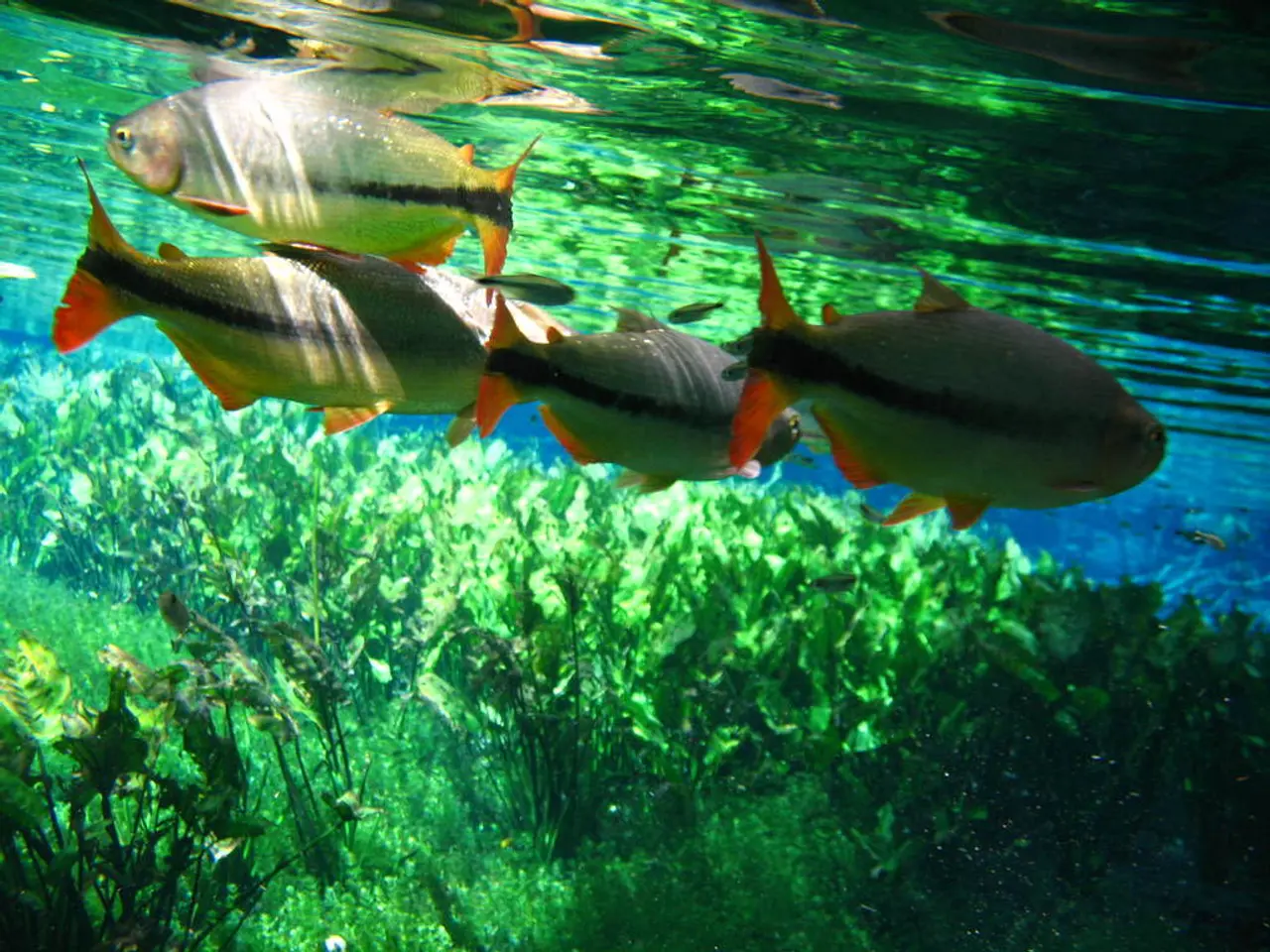Enjoy the Spooky "Summerween" Celebrations, Courtesy of Salmon
By Ashley Overhouse
California's Fall-Run Chinook salmon, an essential part of the state's heritage and a critical component of the $1.4-billion commercial fishing industry, are facing severe declines due to habitat loss and ecosystem degradation.
These magnificent fish, known for their epic migrations, are not only a cultural resource for Native American tribes but also a primary food source for endangered Southern Resident orcas. However, by the time they reach California's rivers, female Fall-Run salmon can appear decayed, giving them a "living dead" appearance.
Historically, most of the water in California's rivers has been allocated to corporate agriculture, leaving rivers low and hot during late summer. Conditions in the Bay-Delta estuary have severely declined over the last few decades due to antiquated legal protections and over-pumping of freshwater.
Reducing water usage can help protect freshwater species like salmon. This is especially crucial during late summer, as it is the time when Fall-Run salmon start their ocean-to-river migration.
Current conservation efforts focus on habitat restoration, improving water flows, hatchery modernization, and collaborative partnerships among state and federal agencies, utilities, and local stakeholders. Key initiatives include dam removal and habitat restoration, restoring access to tributaries, floodplain re-flooding experiments, water flow management, and fisheries management.
The recent removal of four dams on the Klamath River opened about 420 miles of historic habitat, leading to promising returns of fall-run Chinook salmon to tributaries like Shovel and Spenser Creeks. Efforts on the South Fork of Battle Creek involve infrastructure removal to restore "volitional passage," allowing salmon to reach more spawning grounds.
Researchers have collaborated with farmers in the Sacramento Valley to use seasonal floodplains, particularly flooded rice fields in the Yolo Bypass, as productive rearing habitat. Juvenile fall-run Chinook salmon in these floodplains grow faster due to enhanced nutrients and fewer predators, making floodplain restoration a promising conservation strategy.
However, conservation efforts face persistent challenges. Habitat fragmentation and access, climate change and warming waters, water allocation conflicts, and biological stressors like Thiamine deficiency all pose significant obstacles.
Maintaining cold water flows is difficult during droughts and reservoir limitations. Rising water temperatures in spawning areas cause high mortality of eggs and juveniles. Outdated levees and dams limit salmon spawning and rearing areas, and key barriers like Shasta Dam remain, restricting winter-run and other Chinook runs' access to cooler upstream habitats.
There are ongoing tensions among farmers, anglers, agencies, and environmental groups over water usage and habitat restoration priorities, complicating consensus and funding for large-scale projects. New research highlights nutritional deficiencies affecting salmon survival, requiring expanded scientific study and integrated responses.
The protection of salmon also means protecting a clean and safe water supply for Californians. As such, it is crucial to talk to elected officials about reducing corporate agricultural water use and investing in local, sustainable water solutions.
The removal of historical dams, such as in the Klamath River, has shown that when conditions improve, salmon populations can recover. Enough water exists in California for all, but its distribution is a key issue. An equitable transition for Central Valley economies facing climate-whiplash should be considered.
[1] California Department of Fish and Wildlife. (2020). California Fall-Run Chinook Salmon. Retrieved from https://wildlife.ca.gov/Conservation/Mammals/Fish/Salmon/Fall-run-Chinook-Salmon
[2] California Water Science Center. (2020). California Water Science Center. Retrieved from https://ca.water.usgs.gov/
[3] National Oceanic and Atmospheric Administration. (2020). California Coastal Salmon Recovery. Retrieved from https://www.fisheries.noaa.gov/coastal/california/california-coastal-salmon-recovery
[4] Pacific States Marine Fisheries Commission. (2020). Pacific States Marine Fisheries Commission. Retrieved from https://www.psmfc.org/
[5] California Fish and Game Commission. (2020). California Fish and Game Commission. Retrieved from https://www.wildlife.ca.gov/Laws/Commission/Fish-and-Game-Commission
- To ensure the survival of California's Fall-Run Chinook salmon, it is important for homeowners to adopt sustainable living practices, such as reducing water usage during the summer months, to help conserve freshwater resources essential for salmon and other aquatic species.
- As climate change continues to impact California's environment, environmental science becomes increasingly crucial in developing solutions to protect sensitive species like Fall-Run Chinook salmon, such as improving their access to cooler habitats and investigating nutritional deficiencies that may affect their survival.
- Living a sustainable lifestyle isn't limited to personal choices; auctioning for policies that prioritize the protection of vital habitat, such as removing outdated dams and restoring floodplains, can play a significant role in preserving the health of the environment and sustaining species like Fall-Run Chinook salmon, which, in turn, contributes to the overall lifestyle, economy, and cultural heritage of California.




